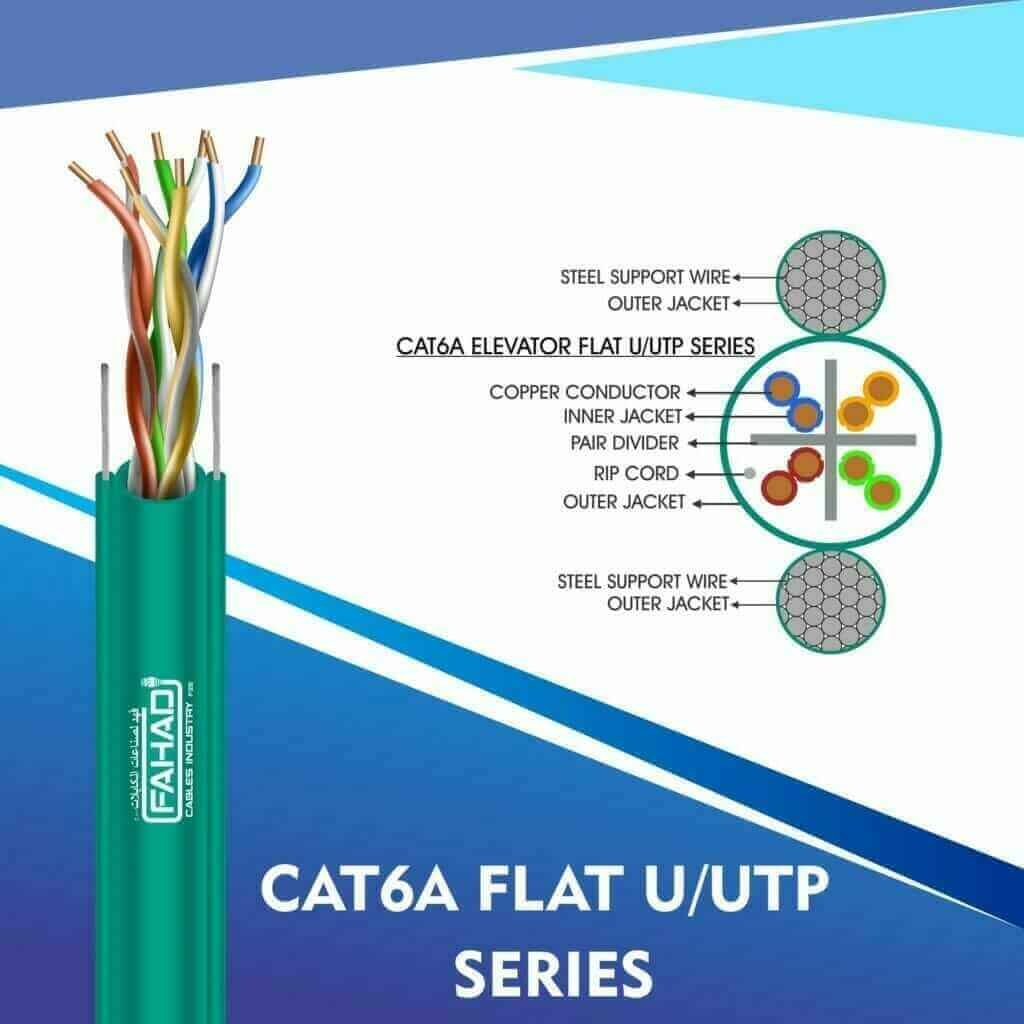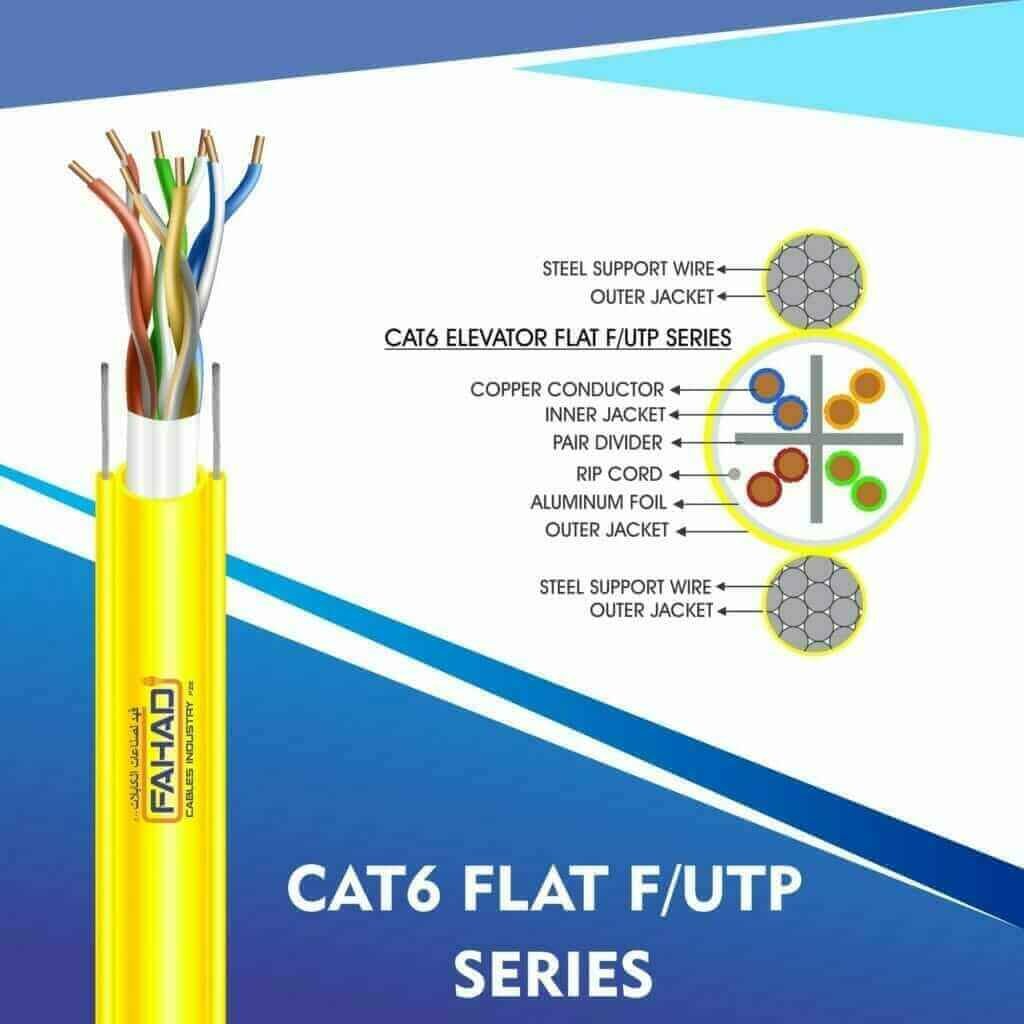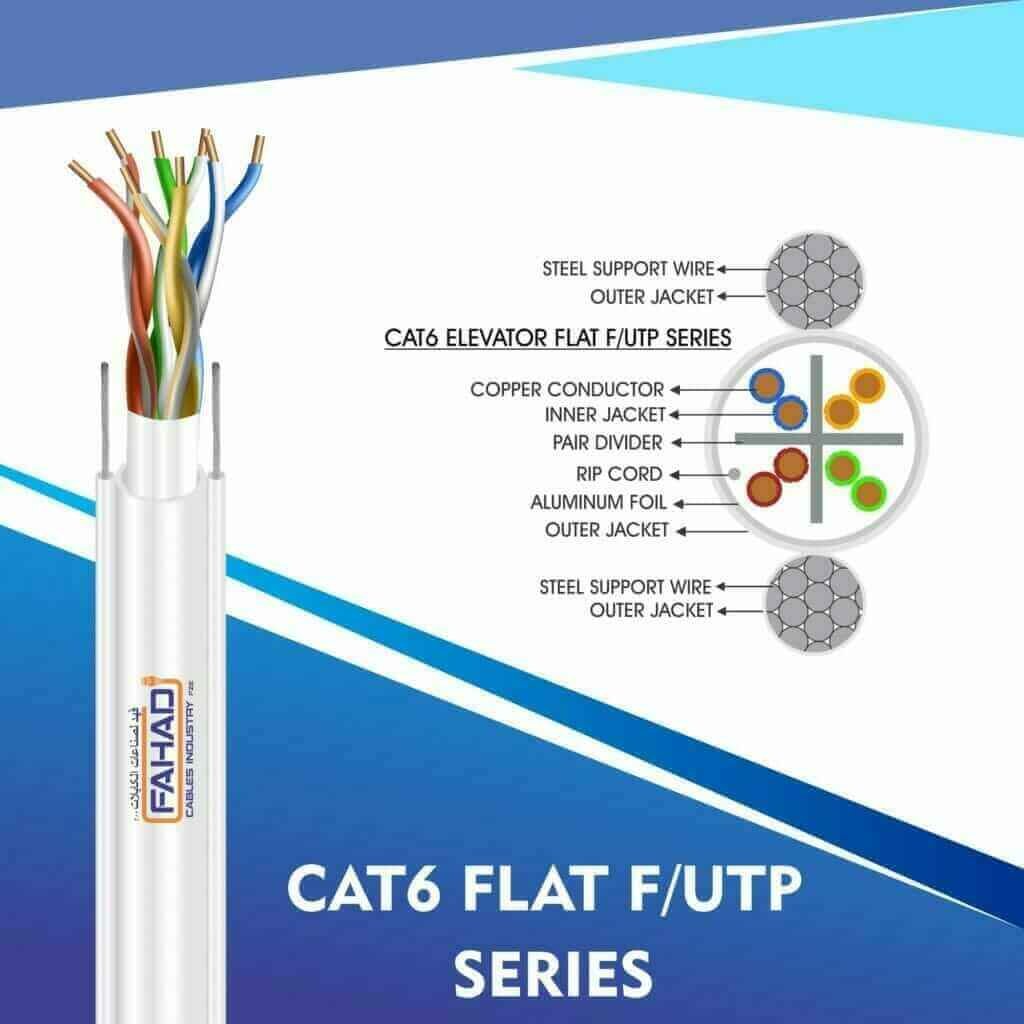- Network Cables
- Control automation Cables
- Data Patch Cord
- fiber optic cable
- Fiber Patch cord Multimode
- Fiber Patch cord Single Mode
- Fiber Pigtails Series
- Coaxial Cables
- security cable wire
- alarm cable
- speaker cables
Understanding Four Core Armoured Cables and Flexible 3 Core 2.5 mm Cable by Fahad Cables Industry FZE

Introduction to Armoured Cables
Armoured cables are a type of electrical cable designed to provide enhanced protection to the conductors they encase. These cables feature an additional layer of armor, typically made from materials such as steel or aluminum, which serves as a barrier against physical damage. The primary purpose of armoured cables is to ensure the safe and reliable transmission of electrical power in conditions where standard cables may not suffice. They are particularly useful in settings that expose cables to harsh environmental factors or heavy mechanical stresses.Four Core Armoured Cables



The applications of armoured cables are diverse and encompass a variety of sectors. In industrial and construction environments, for instance, these cables are often employed to connect machinery, equipment, and various power sources. Their robust design makes them suitable for underground installations, where they might encounter moisture, soil pressure, or rodent activity. Additionally, armoured cables can be found in offshore oil rigs, mining operations, and other critical infrastructures where electrical reliability is paramount.
One of the most significant benefits of using armoured cables is their safety features. The armored layer not only protects against physical threats but also improves resistance to abrasion, extreme temperature variations, and chemical exposure. This is especially crucial in environments where electrical hazards can pose threats to both personnel and equipment. Furthermore, armoured cables often adhere to stringent regulatory standards, ensuring that installations meet safety compliance. As industries continue to evolve, the reliance on durable and secure cable systems such as armoured cables will likely grow, paving the way for enhanced operational efficiency and workplace safety.
What Are Four Core Armoured Cables?
Four core armoured cables represent a significant advancement in electrical wiring technology, specifically designed for applications that require enhanced protection and reliability. These cables typically consist of four insulated conductors, each encased in a robust armoured layer that shields them from external damages such as moisture, mechanical stress, and chemical exposure. The construction typically involves multiple layers, including an insulating sheath that surrounds the conductors and an outer armour made from materials like steel or aluminum, providing the necessary reinforcement.
The primary configuration of a four core armoured cable includes an earth core alongside three phase conductors. This arrangement allows for the balanced distribution of electrical loads, making them ideal for three-phase systems commonly used in industrial settings. The earth conductor enhances safety by facilitating fault current to flow safely to the ground, thus reducing the risk of electrical shocks. The versatility of four core cables makes them suitable for a diverse range of applications, including heavy machinery, substations, and outdoor electrical installations.
When compared to traditional two-core cables, four core armoured cables offer several advantages. Their design enables them to handle more complex wiring tasks and improves their performance in varied settings, particularly in environments that are prone to high levels of electrical interference or physical hazards. The robustness of these cables ensures longer life spans and minimal maintenance requirements, which translates to cost-effective solutions for businesses and industries relying on consistent power supply. Overall, four core armoured cables stand out for their unique combination of safety, durability, and functionality, making them a preferred choice in the electrical industry.
The Importance of Flexibility in 3 Core 2.5 mm Cable
Flexibility is a fundamental attribute of the 3 core 2.5 mm cable, making it an optimal choice for various electrical applications. This type of cable is designed with multiple strands of copper conductors, allowing it to bend easily without sacrificing structural integrity. This characteristic is particularly valuable in situations where adaptability is vital, such as in the installation of electrical systems in tight or compact spaces.
One primary scenario that highlights the importance of flexibility in 3 core 2.5 mm cable is its use in portable equipment. When devices are designed to be mobile, the cables must be able to withstand repeated movement and manipulation. A flexible cable mitigates the risk of wear and tear, which can lead to equipment malfunction or failure. For instance, in tools and machinery that require frequent repositioning, the ability of the 3 core 2.5 mm cable to maintain performance under movement is critical.
In comparison to less flexible cable options, the 3 core 2.5 mm cable delivers superior performance. Cables that are rigid can often lead to difficulties in routing and installation, particularly in areas with limited access. They may require additional fittings or alterations to accommodate their stiffness, which can complicate the job and add to the overall installation time and cost. On the other hand, the flexibility of the 3 core 2.5 mm cable allows for straightforward installation procedures and more effective routing, ultimately enhancing operational efficiency.
Additionally, the structural design of flexible cables aids in reducing the risk of damage during installation and use. This resilience proves advantageous in environments that may expose cables to stress due to environmental factors or mechanical interference. Therefore, the optimal choice of a flexible 3 core 2.5 mm cable can significantly impact reliability and longevity in electrical systems.
Applications for 3 Core 2.5 mm Cables
Flexible 3 core 2.5 mm cables have a wide range of applications in both residential and commercial settings, playing a crucial role in modern electrical systems. These cables are designed with three conductors, allowing them to handle a greater electric load efficiently, making them suitable for various applications. One of the primary uses of 3 core 2.5 mm cables is in connecting electrical appliances, such as ovens, cookers, and water heaters. Their size and construction provide the necessary robustness to ensure reliability over time, even under high power demands.
Additionally, these cables serve as essential components in power distribution systems. In commercial settings, they are commonly used to distribute electricity from a main supply to various outlets, machinery, and lighting fixtures. Their versatility and durability make them well-suited for installations in both indoor and outdoor environments, where they may be exposed to various weather conditions. Moreover, the flexible nature of these 3 core cables allows for ease of installation in complex setups, such as those found in industrial facilities or large retail spaces.
From a safety perspective, the 3 core 2.5 mm cables are designed to comply with electrical safety protocols, which is critical in preventing electrical hazards. Each conductor plays a specific role: one for the live connection, one for neutral, and the third serves as an earth wire to protect against electrical shocks and shorts. This grounding feature is particularly important in environments with a high density of electrical equipment, ensuring that all appliances can operate safely while minimizing the risk of electrical faults.
In summary, flexible 3 core 2.5 mm cables are indispensable for reliable electrical connections in various applications, ensuring safety and efficiency in both residential and commercial installations.
Flat Power Cable Features
Flat power cables are engineered with a unique design that offers a multitude of benefits, making them a preferred choice in various applications. One of the most significant features of flat cables is their ability to save space. Unlike traditional round cables, flat cables can be easily run along walls, tucked beneath carpets, or installed within narrow conduits. This characteristic not only conserves space but also reduces the overall clutter associated with electrical installations.
Another notable advantage of flat power cables is their versatility. They are suitable for a range of applications, from residential setups to industrial environments. This adaptability enables them to be utilized in many contexts, such as office buildings where aesthetics is a consideration or in homes where they are positioned in visible areas. The flat design is particularly beneficial in situations where conventional round cables may be cumbersome, allowing for a cleaner and more organized appearance.
Furthermore, flat cables offer ease of routing in confined spaces. The thin profile permits easy navigation around corners and through tight spots, minimizing the need for cumbersome bends or twists that traditional cables might require. As a result, installation becomes more straightforward, with reduced chances of damage during placement. Additionally, these cables often possess excellent flexibility, allowing them to be adjusted or repositioned without the fear of breaking their internal conductors.
Ultimately, the design and functionality of flat power cables serve to enhance both the aesthetic quality and practical efficiency of electrical installations. Their space-saving advantages and ease of installation make them a valuable option in crafting effective electrical systems, appealing to both professionals and end-users alike.
The Role of Fahad Cables Industry FZE in Cable Manufacturing
Fahad Cables Industry FZE has established itself as a significant player in the cable manufacturing sector, particularly known for its production of quality armoured cables and flexible 3 core 2.5 mm cables. Founded with the vision of providing innovative and reliable electrical solutions, the company has steadily gained a reputation for excellence. Over the years, Fahad Cables has demonstrated a firm commitment to quality and customer satisfaction, ensuring that their products meet or exceed international standards.
The mission of Fahad Cables Industry FZE is centered around delivering high-performance and safe cable solutions tailored to meet the demands of diverse industries. This mission is underpinned by values that prioritize integrity, quality, and innovation. With the rising technological advancements and the evolving needs of various industries, Fahad Cables continually seeks to innovate its manufacturing processes and product offerings. The company invests in state-of-the-art technology and research and development to ensure that its cables are not only efficient but also environmentally sustainable.
Fahad Cables Industry FZE’s focus on producing high-quality armoured cables allows it to cater to sectors that require durable and reliable electrical solutions, such as construction, energy, and telecommunications. Their flexible 3 core 2.5 mm cables are designed to provide superior performance and flexibility, making them ideal for applications in industrial and residential environments. By consistently embracing innovation and maintaining rigorous quality control measures throughout their manufacturing processes, Fahad Cables reinforces its position as a trusted provider within the cable manufacturing industry.
Comparative Analysis: Armoured vs. Non-Armoured Cables
When evaluating the differences between armoured and non-armoured cables, several key factors come into play, including safety, cost, and specific applications. Armoured cables feature an additional protective layer, typically made from materials like steel or aluminum, that safeguards the inner conductors against physical damage, moisture, and various environmental challenges. This added protection makes armoured cables particularly suitable for installations in harsh conditions, such as industrial sites, outdoor environments, or locations with potential hazards such as rodents or impacts.
On the other hand, non-armoured cables are designed for less demanding conditions where the risk of physical damage is minimal. These cables tend to be more lightweight and flexible, making them easier to handle and install. Their cost is also generally lower compared to their armoured counterparts, which can be a significant factor in projects with budget constraints. However, the reduced protection offered by non-armoured cables can lead to vulnerabilities in areas where environmental elements pose a risk.
In terms of safety, armoured cables provide a higher level of protection against electrical faults and physical wear over time. This enhanced safety can be vital in environments where safety regulations are stringent, such as commercial facilities or manufacturing plants, where the risk of damage is heightened. Non-armoured cables may be acceptable in residential applications or well-protected industrial spaces but are less suited for environments undergoing rigorous conditions.
Ultimately, the decision between armoured and non-armoured cables should be guided by the specific application requirements. Proper assessment of environmental challenges, safety needs, and budget constraints will ensure that the right cable type is selected, optimizing both safety and functionality in installations.
Installation Best Practices for Armoured and Flexible Cables
Proper installation of armoured and flexible cables is critical to ensuring their safety, longevity, and efficiency in electrical applications. Both types of cables require specific best practices during handling, erecting, and maintenance to leverage their full potential. Adhering to local electrical codes and regulations is paramount, as these guidelines are in place to minimize risks and ensure the safest operational conditions.
When handling armoured cables, it is important to avoid bending them excessively, as this could compromise their structural integrity. The minimum bend radius specified by the manufacturer must be respected. Typically, this involves keeping bends at least 10 times the overall diameter of the cable. In contrast, flexible cables are designed to endure a certain degree of bending without damage, yet excessive twisting or bending should still be avoided to prevent wear and tear over time.
In terms of erection, cables should be installed in a manner that avoids mechanical stress. This includes ensuring they are adequately supported at regular intervals to prevent sagging, especially in overhead installations. Cables should never be run through sharp edges or rough surfaces without proper protective measures, as this could lead to insulation degradation and potential short circuits.
Maintenance is another key aspect in prolonging the life of both armoured and flexible cables. Regular inspections should be conducted to identify any signs of damage or wear, such as fraying or exposure of the inner conductors. Furthermore, any connections made should be checked for tightness and insulation integrity. In addition, outdoor installations may require additional protective measures against environmental factors such as moisture and UV exposure.
Ultimately, following these installation best practices is essential for maximizing the performance and safety of armoured and flexible cables. Proper adherence to local electrical codes will further ensure compliance and the safety of both users and the environment.
Conclusion and Future Trends in Cable Technology
In summary, the selection of the appropriate cable is pivotal for ensuring safety, efficiency, and longevity in various applications. We have examined the characteristics and applications of four core armoured cables and the flexible 3 core 2.5 mm cable, emphasizing their vital roles in infrastructure and electrical installations. These cables not only play a crucial part in powering residential and commercial spaces but also contribute to the reliability of industrial processes.
Looking ahead, the realm of cable technology is poised for significant advancements. With the ongoing development of new materials, we can anticipate greater flexibility, durability, and performance capabilities in cables. These innovations may include the integration of advanced polymers or other composites that improve resistance to environmental factors, thereby enhancing longevity and reducing maintenance costs.
Sustainability is set to remain a focal point within the cable industry. As consumers and manufacturers alike emphasize eco-friendliness, the trend towards recyclable materials and energy-efficient production methods is likely to gain traction. By implementing more sustainable practices, the cable industry can contribute to reducing its carbon footprint and ensuring a greener future.
Moreover, the increasing demand for robust electrical solutions is driving research and development initiatives aimed at creating products that can withstand extreme conditions while maintaining performance. This includes developments in smart cables equipped with sensors to monitor integrity and performance, which will provide real-time data for preventive maintenance and safety assurance.
As we move forward, the evolution of cable technology will continue to be influenced by the need for enhanced performance, sustainability, and safety. The ongoing research into more robust solutions highlights the importance of staying updated with the latest innovations in cable technology, ensuring that applications are supported by the most effective and reliable products available.

